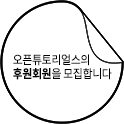~들? 대부분 단수, 복수는 신경쓰지 않아도 괜찮아요.
Korean usually don't care about plural of things. You can do the same.
Examples.
- a hobby, hobbies 취미, a book, books 책 a movie, movies 영화 a music, music 음악, a song, songs 노래
- a (foreign) languague, languagues = 언어, 외국어
So it can be ambiguous. You can emphasize the plural by "~들". But it can be awkward or usually don't needed because of the context.
- a person = 사람, people = 사람(들),Natural I like people. 사람(들)을 좋아해요.
- a child = 아이, children = 아이(들),Natural I like children. 아이(들)을 좋아해요.
You can also use "그 the", 저(that), 이(this)
- Natural (저는) 그 차를 좋아해요. = I like the car.
- Natural (저는) 저 곰인형을 좋아해요. = I like that teddy bear. (on the shelf)
- Natural (저는) 이 곳을 좋아해요. = I like here.
test and practice
- I eat sandwiches with my friends together.
- friends = 친구, 친구들
- with = ~ 와
- together = 함께
- sandwich = 샌드위치
- eat = 먹어요
- 친구와 함께 샌드위치를 먹어요.
- Let's buy serveral souvenirs
- buy 사요
- souvenirs 기념품
- serveral 여러(adjective)
- 여럿(adverb)
- 기념품을 여럿 사요. = 여러 기념품을 사요
- There are various pictures.
- there be = 있어요
- various, a variety of = 여러가지, 여러
- be various 여럿이에요.
- 사진 = picture
- 여러가지 사진(들)이 있어요. = 사진(들)이 여럿 있어요. = 사진(들)이 여럿이에요.
- There are many people. = people are a lot
- people 사람
- many = 많은
- be a lot/many =많아요
- 많은 사람(들)이 있어요 = 사람(들)이 많아요.
- Try on many hanboks
- 한복 = korean traditional dress
- try on (cloth) = 입어 봐요
- 입어요 = wear
- ~해봐요 = try
- 여러 한복을 입어 봐요 = 한복을 여럿 입어봐요.
- There are gate keepers at the front door of 경복궁
- at = ~에
- front door 정문
- gate keeper = 경비병
- 경복궁 정문에 경비병이 있어요.


